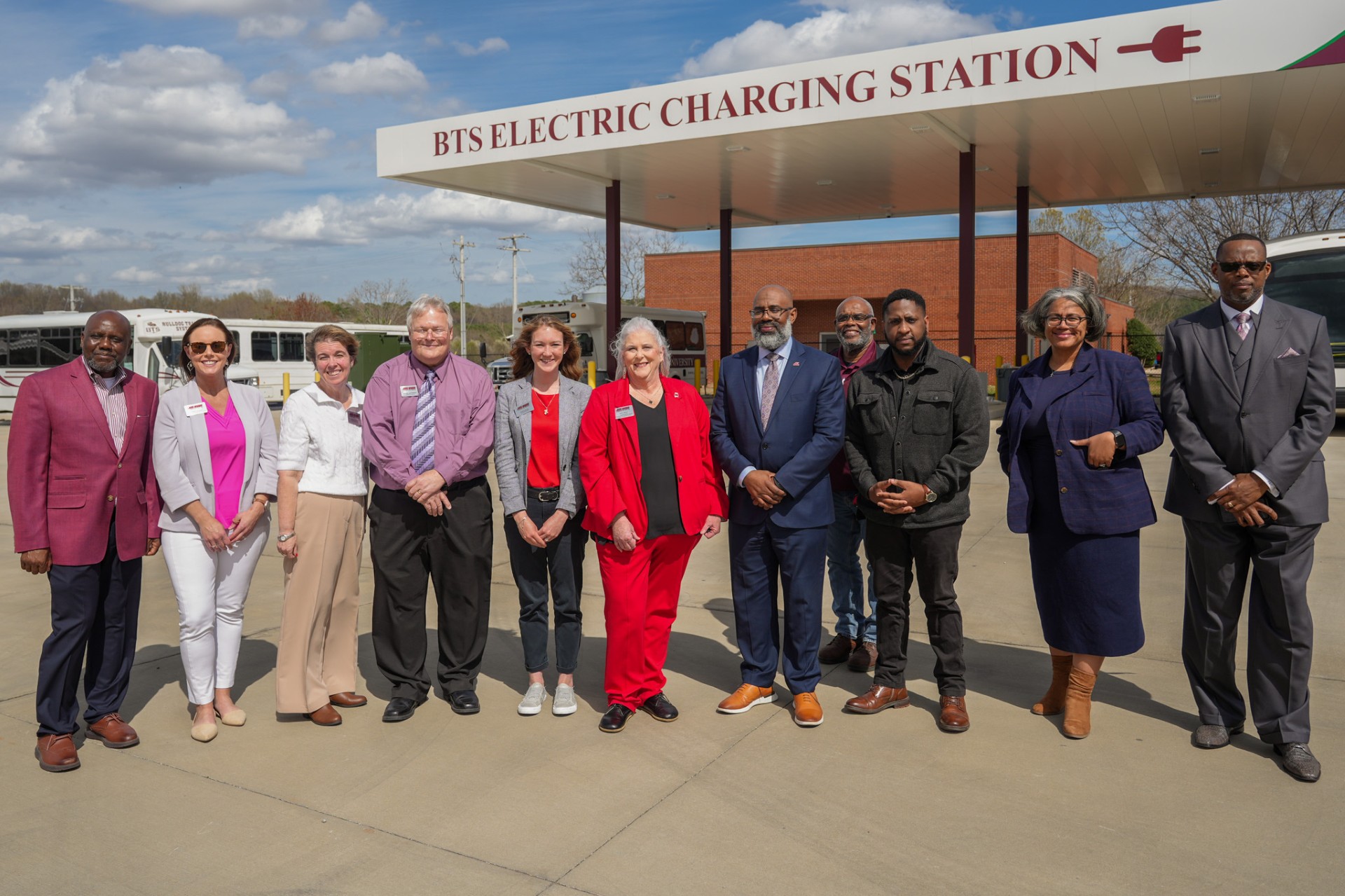Representatives Gain Key Insights on Transitioning to Electric Buses

AAMU Hosts Jax State for Tour of Bulldog Transit System
Jacksonville State University (Jax State) recently toured Alabama A&M University to gain insights into the Bulldog Transit System (BTS) and the University’s transition to electric buses. The tour provided an opportunity for Jax State representatives to explore AAMU’s sustainable transportation initiatives and learn about best practices for implementing a similar system.
The visit began with a meet-and-greet session, followed by a presentation on the history and operations of BTS. BTS Operations Supervisor Lei Hollingsworth-Jackson provided an overview of the system, while Director of Transportation Marshall Chimwedzi shared key information on funding opportunities and the transition to a zero-emissions transportation system. Several University administrators attended the session, engaging with guests and answering questions.
Throughout the day, the Jax State delegation participated in discussions and attended a campus tour aboard an electric bus. The tour highlighted the University’s investment in sustainable infrastructure, including the Department of Transportation (DOT) Solar Powered Microgrid System and Charging Station.
Alabama A&M introduced electric buses to the campus in 2019 and has since expanded its fleet and infrastructure to include six electric buses, two 25-passenger shuttles, two coach buses for travel, and seven 15-passenger vans for off-campus routes. BTS operates four on-campus routes from 7:00 a.m. to 6:00 p.m. with additional weekend and holiday shuttles, as well as six off-campus routes running until 10:00 p.m. The department employs 12 full-time and nine part-time drivers.
Dr. Kevin Hoult, Associate Vice President of Auxiliary Business Services at Jax State, expressed his gratitude for the opportunity.
“It’s a pleasure to be here on the Alabama A&M campus,” said Hoult. “We came here solely to evaluate and review your current transit system, to see how it operates and to learn as much as we can on how to implement a similar system back on our campus.”
Chimwedzi outlined the major components of the transition to a zero-emissions system, which included infrastructure development for charging stations, charging management programs, maintenance planning, and training initiatives for operators and technicians. These strategies have helped the University advance toward its goal of achieving 100% zero emissions by 2031.
“Our transition to a zero-emissions transportation system has been a strategic and carefully planned process,” said Chimwedzi. “By sharing our experiences with Jax State, we hope to provide them with valuable insights that will help them navigate their own journey toward sustainable campus transportation.”